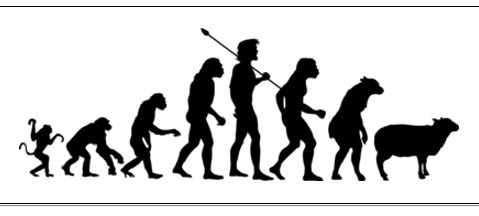fncceo
Diamond Member
- Nov 29, 2016
- 43,415
- 36,272
- 3,615
And why do you calculate 13 years for a generation?
Birth to the ability to procreate.
Follow along with the video below to see how to install our site as a web app on your home screen.
Note: This feature may not be available in some browsers.
And why do you calculate 13 years for a generation?
And why do you calculate 13 years for a generation?
Birth to the ability to procreate.
So you're anti-Evolution too you ******* MORON!68,000 generations and the experiment ends in not showing any signs of evolution.
"Science brings one nearer to God."
-Louis Pasteur
Longest Evolution Experiment Dead-End - Richard William Nelson

False. There is no intent involved.When a virus mutates it only changes shape to keep the immune system from killing it.
You mean the experiment doesn't understand evolution. The article simply reported on the longest running experiment on evolution ending in failure.Unfortunately, that article a fatal misunderstanding of how evolution functions.
Genetic mutation doesn't happen to adapt fitness to the environment. Genetic mutations are unrelated to the suitability of the organism to survive. Genes have no way of perceiving the requirements of survival in the environment. Genetic mutations are spontaneous and random and are mostly inconsequential to the organism, frequently harmful, and only occasionally useful in adaptability to the environment. When a mutation is useful, that increases the likelihood of it being passed on to future generations.
The experiment proves that organisms mutate and that those mutations are passed on. It would be highly unlikely for a major adaptive change to occur -- particularly in the closed and controlled environment of the experiment -- in as few as 70,000 generations. Human evolution happened over 85 million years or 6.5 million generations.
And no, mutations are not beneficial to any organism.
And as I posted in another thread, DNA research shows humans, apes, aardvarks, etc all appeared at the same time, less than 200K years ago according to their timescale.
I would love to see the mutation that caused organisms to fly in the air.
I mean, how long did they mutation take to begin changing the organism? My guess is at the best case scenario, 10 seconds before hitting the ground dead.
I would love to see the mutation that caused organisms to fly in the air.
I mean, how long did they mutation take to begin changing the organism? My guess is at the best case scenario, 10 seconds before hitting the ground dead.
A mutation for wings didn't suddenly sprout. Think of flying squirrels with large skin flaps that allowed them to glide to trees further than a simple jump. Larger skin flaps would allow longer jumps. I would imagine that many other early organisms that were tree born would find these evolutionary advantages. The flaps may gradually move to the arms to the extent that sustained flight would be possible. Think of bats which are mammals.
How long do you figure my cat will sprout wings and fly away?
Well that is all well and good, but I have yet to meet a 200 million year old cat.How long do you figure my cat will sprout wings and fly away?
Approximately 200 million years. The approximate time we know passes between flying insects and flying vertebrates.
So be patient.
How long do you figure my cat will sprout wings and fly away?
How long do you figure my cat will sprout wings and fly away?
That is one (rather juvenile) way of dodging the real issue of evolution.
Well that is all well and good, but I have yet to meet a 200 million year old cat.How long do you figure my cat will sprout wings and fly away?
Approximately 200 million years. The approximate time we know passes between flying insects and flying vertebrates.
So be patient.

Right........................OK........................just don't buy it is all.
Ok, Ok, I found a picture as well and now I'm starting to believe.Right........................OK........................just don't buy it is all.
Here’s the great part. You don’t have to buy it. It free will, baby.

What a boring world it would be if everyone believed the same thing.
Thank biology we’ve evolved to be different.
There are numerous instances that show evolution throughout time. For example, webbed toes is actually a dominant gene, but happens very rarely.
There are numerous instances that show evolution throughout time. For example, webbed toes is actually a dominant gene, but happens very rarely.
I have the most trouble with the changing of species.
I don't buy it.
What a boring world it would be if everyone believed the same thing.
Thank biology we’ve evolved to be different.
I find there is often an element of truth in most things. I just don't buy the notion that scientists understand it all.